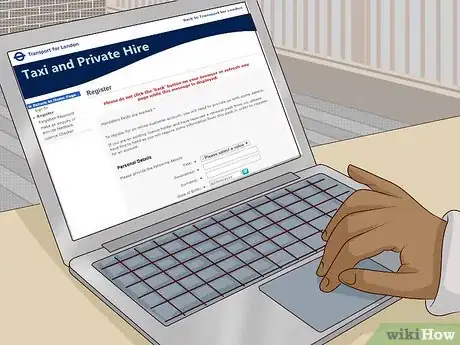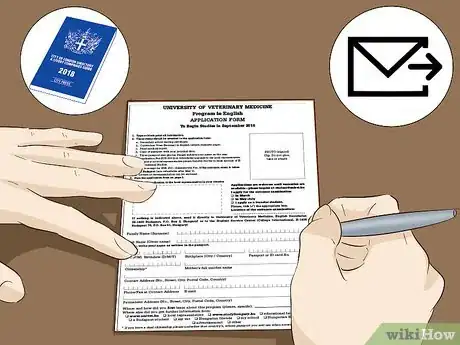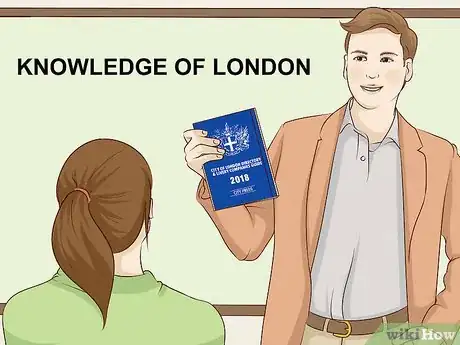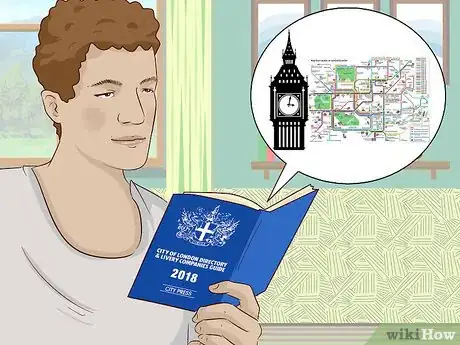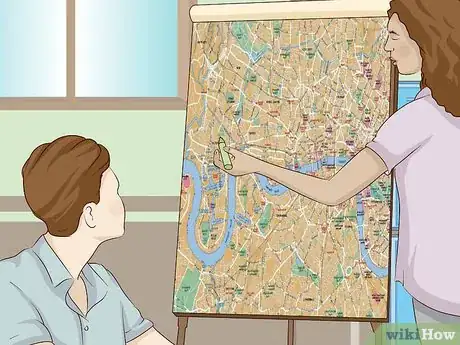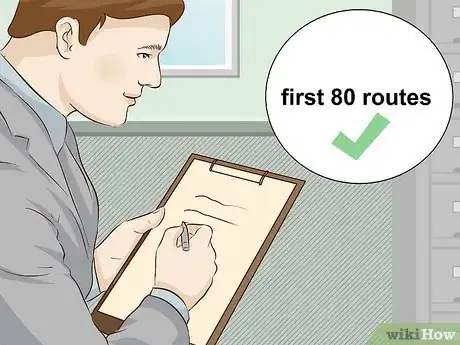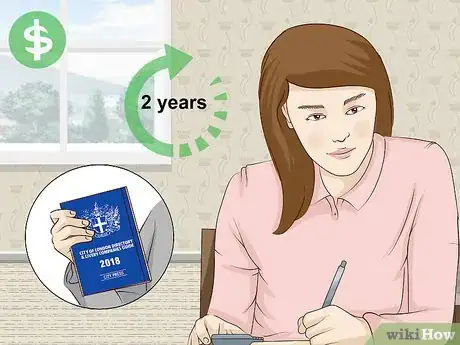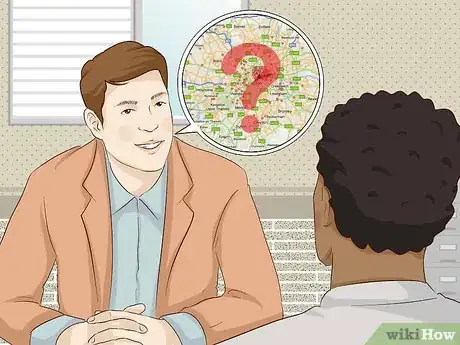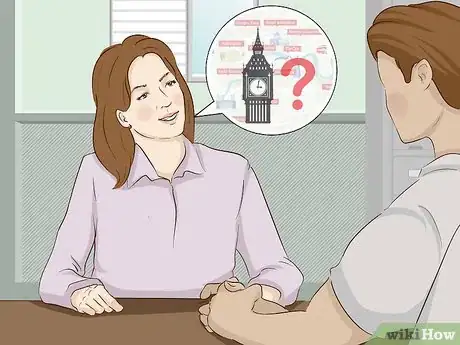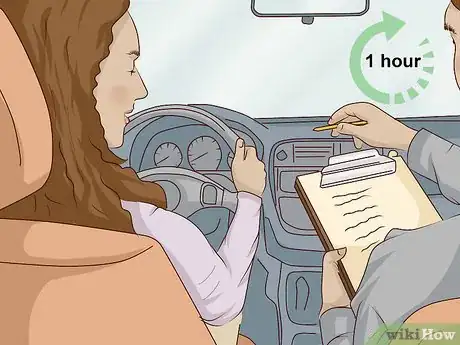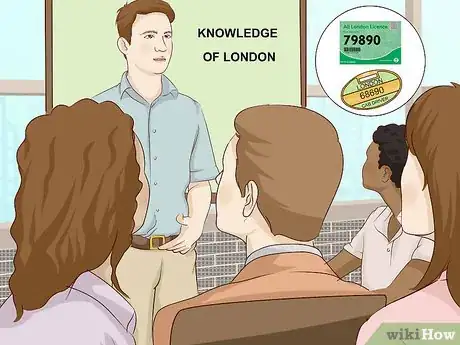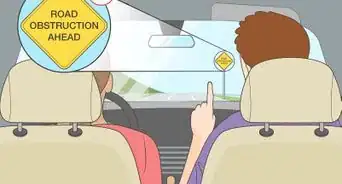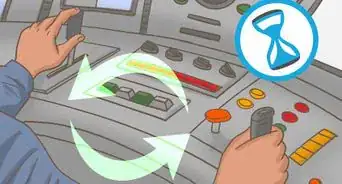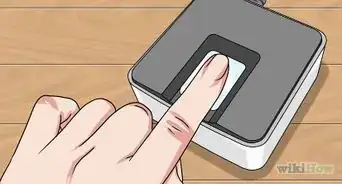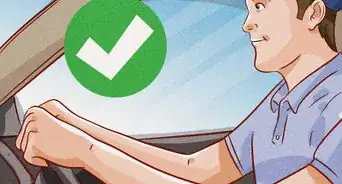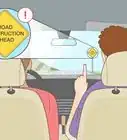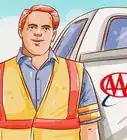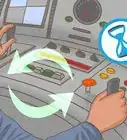This article was co-authored by wikiHow Staff. Our trained team of editors and researchers validate articles for accuracy and comprehensiveness. wikiHow's Content Management Team carefully monitors the work from our editorial staff to ensure that each article is backed by trusted research and meets our high quality standards.
This article has been viewed 17,992 times.
Learn more...
The Knowledge of London taxi knowledge test is considered one of the most rigorous examinations for taxi drivers in the world. It consists of 7 stages, including a self-assessment, a written exam, 3 oral exams, a driving exam, and a series of talks to test your knowledge of London’s roads, landmarks, and destinations. With some dedication and hard work, you can apply for your license, learn the routes of London, and pass the taxi knowledge test to become a London taxi driver!
Steps
Applying for a License
-
1Understand that mastering the Knowledge of London takes 3-5 years. Being a taxi driver in London requires extensive knowledge of the routes, landmarks, and destinations throughout the city and the suburbs. Normally, learning these can take 3 years or more due to the amount of knowledge required.[1]
- During this time, you can still hold a part-time or full-time job as long as you are able to devote time to studying for the knowledge exam.
-
2Decide which license is right for you. The 2 types of taxi licenses are All London, which is green, or Suburban, which is yellow. With the green badge, you can work anywhere in the Greater London Authority area. With the yellow badge, you are only permitted to work in 1 of the 9 sectors in the suburbs of London.[2]
- You can choose to get both types of licenses if you think you will be working in downtown London and in the Suburbs.
- You can make money and work whenever you’d like in either area, but they require different knowledge of routes. The exam is administered according to which license you choose to apply for.
- If you’re more familiar with the city, you might start with the green badge. If you know the suburbs better, you might opt for a yellow badge.
Advertisement -
3Register online on the Transport for London website. To start your application, make an account with Transport for London at https://tph.tfl.gov.uk/TfL/home.page by providing them with your basic information. You can make an account as long as you’re 18 years of age, hold a DVLA, Northern Ireland, or other European Economic Area driver’s license, and are eligible to work in the UK.[3]
- You will also need to pass an enhanced background check to prove that you’re of good character and haven’t been convicted of a serious crime in the past.
- If you’ve had any conviction a for violent crime or serious sexual offence, you will be disqualified. For less serious offences, such as touting, you may qualify if there have been no penalties within the last 12 months and no more than 1 instance of the offence in the past 5 years.
-
4Submit the necessary medical paperwork to get a Blue Book. Once you create your account and fill out the information, you will also need to get a medical check. Meet with a doctor to go over your medical history and have them conduct a thorough medical check, which will be the last step before you receive your Knowledge of London Blue Book in the mail.[4]
- Some conditions, such as visual impairments, cardiological or neurological diseases, and psychiatric conditions may disqualify you from becoming a taxi driver.
- You should receive your Blue Book in the mail shortly after all of your information is received.
-
5Attend an initial Knowledge of London talk. At a Transport for London office, an examiner will discuss tips and methods for learning the Knowledge of London. They will field questions and give a broad overview of what to expect from the process.
- The talk normally lasts for about an hour, and you are able to ask any questions you have about taking the exam or specific content in the Blue Book.
- The talks are schedule in advance on certain dates throughout the year. Normally, there is at least 1 talk per month at each Transport for London office.
Learning London’s Routes
-
1Study the Blue Book to learn routes, roads, and landmarks. Annex B of the Blue Book lists 320 routes within a 6 mi (9.7 km) radius of Charing Cross, which is considered central London. It may be helpful to use flash cards, break the information into smaller parts, or watch videos about the different routes to visualize them.
- If you’re planning to get the yellow Suburban badge, the number of routes will vary based upon which sector you are planning to work in, but they can also be found in Annex B.
-
2Consider using a scooter to ride the routes if you’re a visual learner. Many future taxi drivers use a scooter to quickly navigate the routes when they’re learning. This will improve your familiarity with London’s terrain and give you firsthand experience with the various traffic patterns around the city.[5]
- If you aren’t licensed to ride a scooter, you can use a bike to ride through the routes. Be sure to stay hydrated and plan your routes to make sure they are bike-friendly.
- Always be careful when navigating the streets of London by scooter or bike. Although you’re learning the landmarks as well, remember to pay attention to the roads and traffic!
-
3Enroll in a Knowledge School if you learn better in a classroom setting. Some people find that the information is easier to understand when it's taught in a traditional classroom. There are a variety of independent schools throughout London who charge a fee for classes that review the content of the Blue Book to prepare drivers for the “Appearance” stage of the exam.[6]
- Keep in mind that these classes are not sponsored or regulated by Transport for London, so they may teach information that won’t be on the exam at all. Before you commit to a program, research the schools and read Google reviews from attendees.
- Most schools have flexible schedules and charge based on the number of hours in class. Depending on how often you attend, classes can last anywhere from a few weeks to a few months. Many classes have a per class fee of £6-£10, which you will pay before the class to secure a ticket.
-
4Take the free self-assessment on the first 80 routes. After 6 months of studying the Blue Book, contact Transport for London to sign up for a self-assessment at a local office. It covers the first 80 routes, and will gauge the efficacy of your studying. An examiner will be present to help you understand the answers and answer any questions you might have.
- There's no fee for the self-assessment.
- Your score on this exam isn’t recorded, so take advantage of the opportunity to measure the effectiveness of your studying techniques.
- Don’t be afraid to ask the examiner about any answer that you don’t understand or question that might be confusing. They’ll be able to help you understand the material and study for your written exam.
Taking the Exam
-
1Sit for the written exam within 2 years of receiving your Blue Book. You can sign up for the 2-section written exam at Transport for London after you pass the self-assessment. The first section is 5 questions that test your knowledge of the shortest possible route between 2 points, and the second section consists of 25 questions about various points on the routes. To pass, you need a score of 60 out of 100.
- For each written exam, you have to pay a £200 fee to the Transport for London offices.
- If you don’t pass the first time, you will be required to pay the fee again to retake the test. You will likely have to wait a period of time between tests, depending on your score and how many times you have attempted the exam.
-
2Attend 3 appearances with an examiner to test your knowledge of routes. Stages 3-5 of the test are a series of oral exams with an examiner from the Transport for London office. The examiner will ask short questions about routes, landmarks, and named buildings. Most appearances take 20-30 minutes and test your ability to quickly remember the information.
- The examiner will grade your answers on a 4-tiered scale for each question that corresponds to a score out of 10 points. You must score at least 12 points to move to the next stage of appearances.
- There is a one-time £400 fee for the appearances. You will work with the examiner to schedule your meetings at a time that works for you, within a 4-8 weeks of each other.
- If you don’t pass an appearance, you are able to redo the appearance one time. If you don’t pass on the second try, you will be required to retake the written examination.
-
3Take the Suburban Examination to prove working knowledge of the suburbs. This is another oral examination that covers the routes and landmarks in the suburbs. It also tests your ability to navigate between central London, the suburbs, and the airports in the area. It consists of 6 questions which are graded in the same manner as appearances.
- If you are just getting a yellow badge, they will also test your knowledge of central London landmarks, hospitals, and other major destinations as they relate to your sector.
- There is no additional fee for the Suburban Examination as it's covered under the appearances fee.
- If you don’t pass the Suburban Examination, you can retake it until you receive a passing grade.
-
4Take the taxi driving test when it's available. Once you complete appearances, you will be required to show your ability to drive a taxi. As of 2018, the Transport for London office has not yet announced the format for the driving test, but all drivers who pass the written exam will be required to pass a driving test once the arrangements for the test are finalized.[7]
- Previously, the test was an hour long and included a section of questions about Highway codes and road signs. The Transport for London office is working to reinstate a driving test as soon as possible.
- In the past, retaking the driving test was permitted.
-
5Attend the pre-licensing talk to receive your badge. After you have passed all of the examinations, you will be required to attend a talk by an examiner. They will review the Knowledge of London information briefly, and give guidance on life as a taxi driver in London. At the end of the ceremony, you can collect your badge and license.
- Don’t be afraid to ask questions and make friends at the talk. Most of the people there will also be doing the same job as you, so it’s a great opportunity to make connections to advance your professional career!
- If you don’t attend the talk, you won’t be able to receive your license and badge.
Warnings
- When learning the routes by walking, biking, or riding a scooter, always remain aware and pay attention to traffic.⧼thumbs_response⧽
References
- ↑ https://tfl.gov.uk/info-for/taxis-and-private-hire/licensing/learn-the-knowledge-of-london
- ↑ https://tfl.gov.uk/info-for/taxis-and-private-hire/licensing/learn-the-knowledge-of-london
- ↑ https://tfl.gov.uk/info-for/taxis-and-private-hire/licensing/apply-for-a-taxi-driver-licence
- ↑ https://tfl.gov.uk/info-for/taxis-and-private-hire/licensing/apply-for-a-taxi-driver-licence
- ↑ https://tfl.gov.uk/info-for/taxis-and-private-hire/licensing/learn-the-knowledge-of-london
- ↑ https://tfl.gov.uk/info-for/taxis-and-private-hire/licensing/learn-the-knowledge-of-london
- ↑ https://tfl.gov.uk/info-for/taxis-and-private-hire/licensing/learn-the-knowledge-of-london/taking-the-taxi-driving-test
About This Article
To pass the taxi knowledge test, start by studying the Blue Book routes located in Annex B. You can walk them, look at them on a map, or even ride them on a bike or scooter to familiarize yourself with the shortest routes and the landmarks along them. If you need more help learning the routes, you can enroll in a Knowledge School located in London, where you'll learn the information in the Blue Book in a classroom setting. For more tips, including how to pass each stage, read on!


